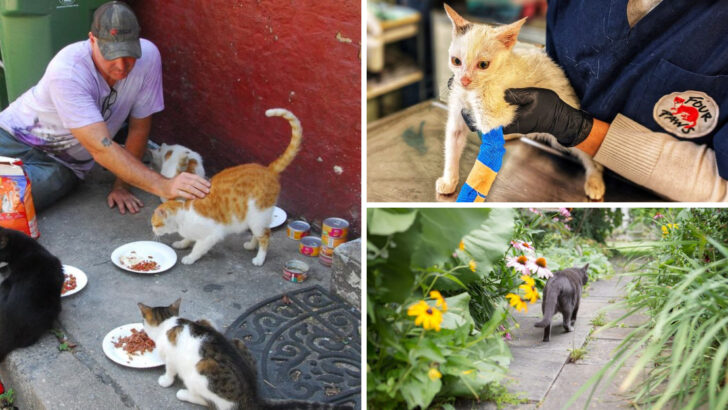Stray cats need help, but inviting them into your home isn’t always the best option. There are plenty of ways to make a difference in their lives without opening your door.
From providing food and water to creating safe spaces, these small acts of kindness can go a long way. You can be a hero in a cat’s life without committing to a permanent house guest.
You don’t need to be a cat expert to know that the outdoors can be tough. Whether it’s the cold, predators, or finding enough food, strays face constant challenges. But don’t worry, there are simple ways to support them in their battle for survival.
Ready to be the change? Here are 21 creative ways to help a stray cat feel safe and cared for without letting them into your home.
Provide Fresh Water

One simple yet effective way to help stray cats is by providing fresh water. Place a clean bowl of water in a safe and accessible location, such as a garden or patio. Cats constantly seek hydration, and this small act can greatly contribute to their well-being. Ensure the water remains clean by refreshing it daily. Also, consider using a weighted dish to prevent it from tipping over. By offering fresh water, you provide a vital resource that supports their health and encourages them to frequent your area, knowing they have a reliable hydration source.
Offer Nutritious Food
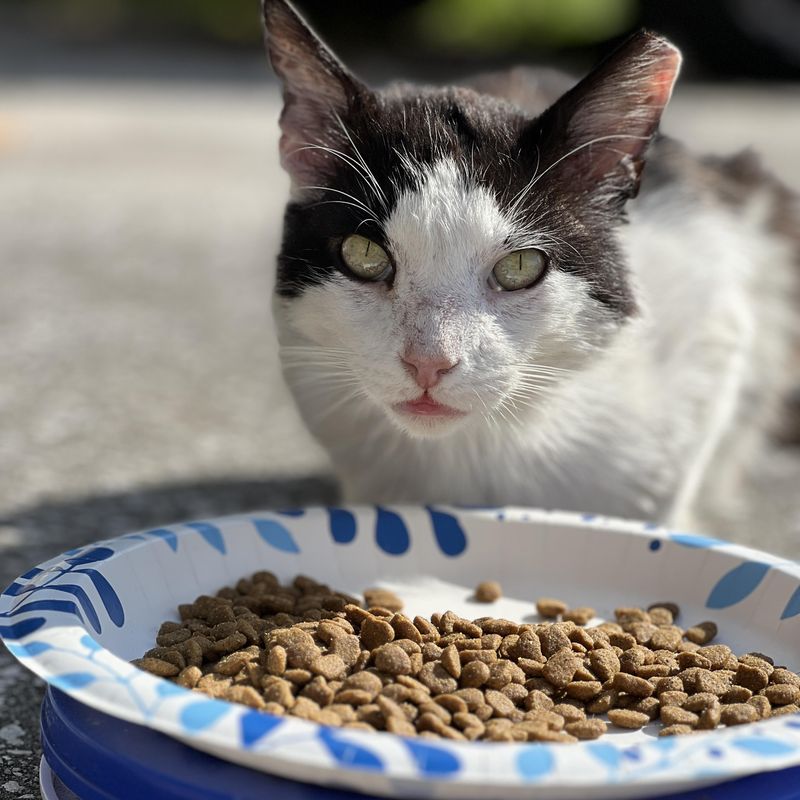
Feeding stray cats can be a rewarding way to support their health. Opt for nutritious cat food, ensuring it meets their dietary needs. When feeding, try to maintain a consistent schedule, as cats thrive on routine. Place the food in a quiet spot away from busy roads. Additionally, monitor the portions to avoid attracting unwanted wildlife. By offering balanced meals, you play a crucial role in their survival and help them maintain a healthy weight. This thoughtful gesture shows you care, making a positive impact on their daily life.
Create Shelter

Providing shelter is essential for stray cats, especially during harsh weather. You can create a simple shelter using items like plastic tubs or wooden crates. Line it with straw or old blankets for warmth. Position the shelter in a quiet, hidden spot to avoid disturbances. This safe haven offers protection from rain, wind, and extreme temperatures, ensuring the cats stay comfortable. Regularly check the shelter for maintenance needs, like replacing wet bedding. By building a cozy refuge, you offer stray cats a secure spot to rest and feel safe.
Spay and Neuter

Spaying and neutering stray cats helps control the population and improves their health. Many communities offer low-cost or free programs to assist with this. By participating, you reduce the number of kittens born homeless. This proactive step minimizes the risk of disease and decreases territorial behavior. It’s essential to coordinate with local animal welfare organizations to trap, neuter, and return (TNR) the cats safely. Through these efforts, you contribute to a healthier and more manageable stray cat population, enhancing their quality of life and community relations.
Provide Medical Care
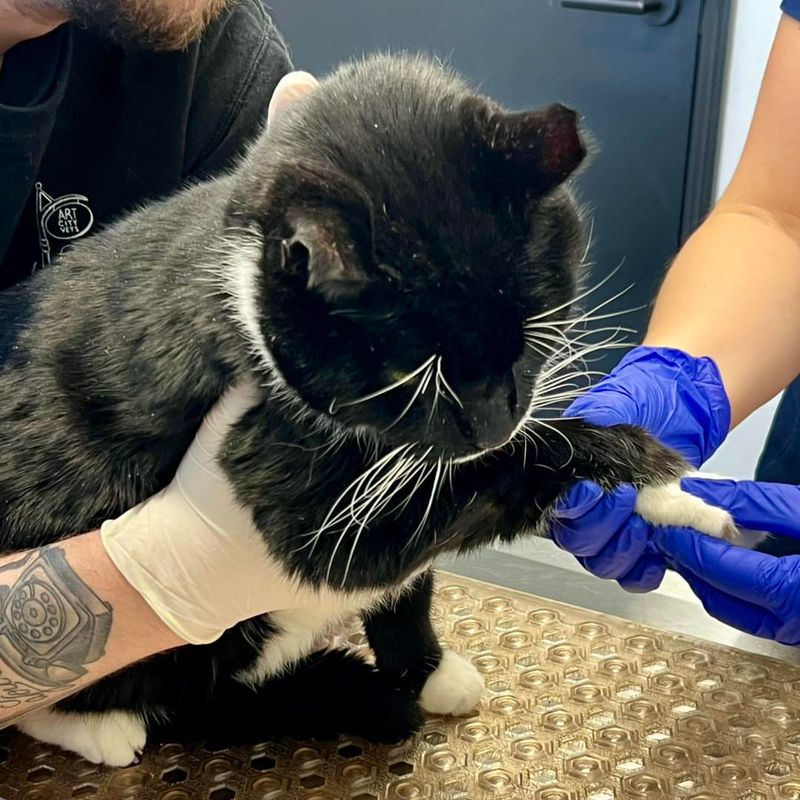
If you notice a stray cat in need of medical attention, providing care can save their life. Work with local vets willing to offer services at reduced costs. Common issues include wounds, fleas, and infections, all of which require professional treatment. Addressing these needs not only alleviates their suffering but also prevents the spread of diseases. Regular check-ups, vaccinations, and treatments can significantly improve their health. By ensuring stray cats receive necessary medical care, you actively enhance their quality of life, showing them compassion and kindness.
Use Reflective Collars
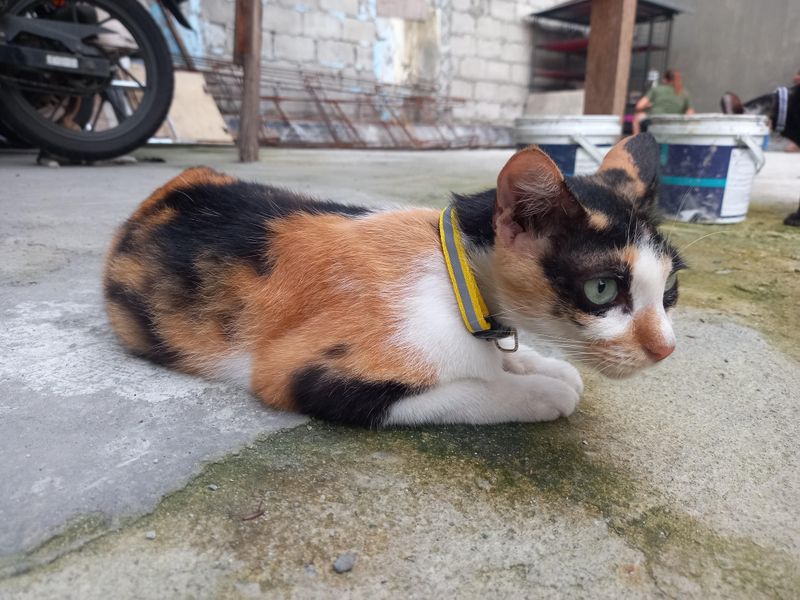
Fitting stray cats with reflective collars can increase their safety, especially at night. These collars make them more visible to drivers, reducing the risk of accidents. Choose a breakaway collar to prevent injuries should it get caught on something. Reflective collars also signal to others that the cat is cared for, which might deter harm. By providing this simple safety measure, you help protect stray cats as they navigate the neighborhood, ensuring they are seen and safeguarded from potential dangers in their environment.
Set Up Feeding Stations

Establishing a designated feeding station can organize and manage feeding efforts for stray cats. This strategic spot allows you to consistently provide food, making it easier for cats to locate meals. Ensure the station is in a quiet area, shielded from weather and hidden from public view to avoid complaints. Use sturdy containers to store food, keeping it fresh and inaccessible to other animals. By setting up a feeding station, you streamline feeding routines, fostering a dependable environment where cats can eat safely and comfortably.
Install a Cat Camera
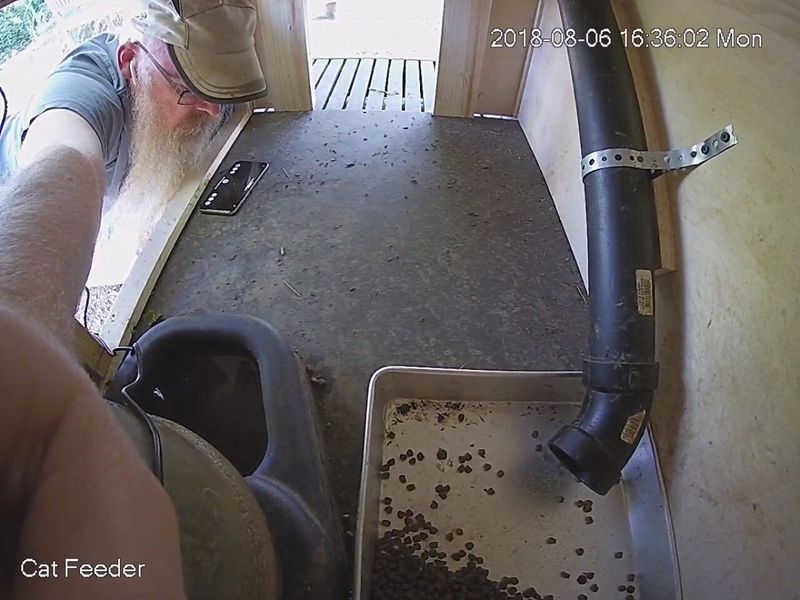
Installing a cat camera allows you to monitor stray cats and their activities. This technology helps you understand their habits, assess their health, and identify any new cats in the area. Choose a camera with night vision and motion detection for comprehensive monitoring. Use the gathered data to adjust feeding times or address health concerns. By observing the cats remotely, you can provide better care and ensure their needs are met without direct interference. This innovative approach enhances your ability to support stray cats effectively.
Sponsor a TNR Program

Trap-Neuter-Return (TNR) programs are vital for managing stray cat populations. By sponsoring these initiatives, you contribute to their success, ensuring they have the resources needed. Your support aids in purchasing traps, neutering services, and providing post-surgery care. Participating in TNR helps stabilize the cat population, reducing the number of homeless kittens. It also improves the health and behavior of existing cats. Engaging with local groups or donating funds are impactful ways to show your commitment to humane and effective stray cat management.
Educate the Community

Raising awareness about stray cat issues encourages community involvement in their care. Host educational workshops, distribute flyers, or use social media to share information. Focus on topics like feeding guidelines, health care, and the importance of TNR programs. Engaging the community fosters compassion and support for these animals. Encourage neighbors to participate in care efforts and report sightings of new or injured cats. By educating others, you create a network of informed individuals dedicated to improving the lives of stray cats in your area.
Build Cat Perches
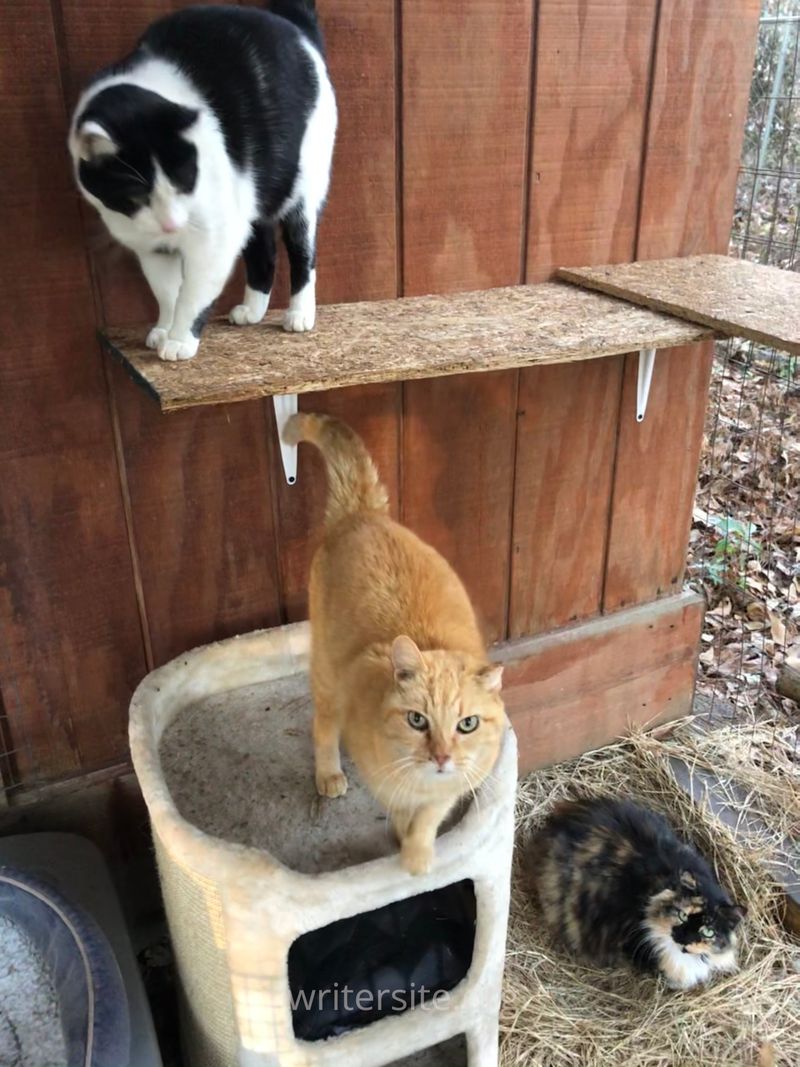
Cat perches provide stray cats with a place to rest, play, and observe their surroundings. Constructing these structures in your yard offers them a safe haven. Use sturdy materials like wood, ensuring stability. Position perches in shaded areas for comfort. These elevated spots allow cats to watch for potential threats while enjoying relaxation. Regularly inspect and maintain the perches for safety. By offering this simple addition to your yard, you enrich the cats’ environment, giving them a peaceful place to escape the hustle and bustle.
Create a Feeding Schedule

Establishing a feeding schedule helps stray cats anticipate meal times, reducing anxiety and competition. Consistency is key—feed them at the same times daily. This routine encourages regular visits, allowing you to monitor their health and numbers closely. A set schedule also prevents overfeeding and minimizing food waste. Coordinate with neighbors to avoid duplicated efforts. By creating a reliable feeding routine, you provide stray cats with a dependable source of nutrition, promoting their well-being and fostering a trusting relationship with them.
Distribute Identification Tags

Providing identification tags for stray cats helps manage and care for them. Attach tags to their collars with your contact information. This can assist in reuniting lost cats with their caregivers or alerting you if they need help. Tags also signal that someone is looking out for the cat, which might deter harmful actions. Encourage others in the community to use tags for cats they feed. By ensuring stray cats have ID tags, you enhance their safety and support network, offering peace of mind for both cats and humans.
Use Motion-Activated Lights

Motion-activated lights can help deter potential dangers for stray cats. Install them in areas where cats frequent to discourage predators or unwelcome visitors. These lights also aid in observing the cats’ nighttime activities. Ensure the lights aren’t too bright to avoid discomfort. This simple technology provides a safer environment, allowing cats to move freely without interruption. By using motion-activated lights, you add a layer of protection to their habitat, demonstrating your commitment to their safety and well-being.
Donate to Animal Charities
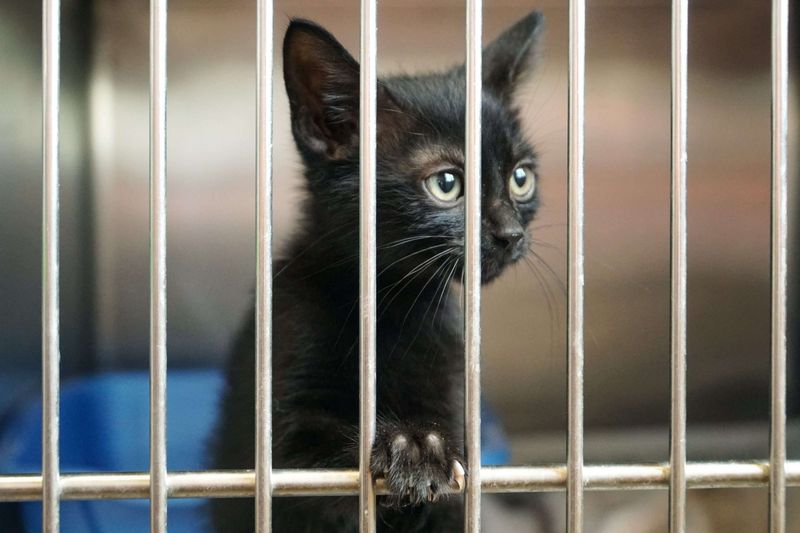
Supporting animal charities can indirectly benefit stray cats. Donations fund essential services like medical care, spay and neuter programs, and food supplies. Choose reputable organizations that focus on stray and feral cat welfare. Even small contributions can make a significant impact. Consider setting up recurring donations for sustained support. By contributing financially, you help provide resources that improve the lives of stray cats, ensuring they receive necessary care and protection. Your generosity extends compassion to these animals, reinforcing community efforts to aid them.
Encourage Adoption

Promoting adoption is a powerful way to help stray cats find permanent homes. Share information about adoptable cats in your community through social media, flyers, or local events. Encourage friends and family to consider adoption, highlighting the benefits of giving a cat a forever home. Collaborate with shelters and rescue groups to organize adoption drives. By advocating for adoption, you increase the chances of stray cats finding loving families, reducing their numbers on the streets and improving their overall quality of life.
Plant Cat-Friendly Gardens

Creating a cat-friendly garden can provide enrichment for stray cats. Plant catnip, valerian, and cat grass to attract them. These plants encourage playful behavior and can have calming effects. Ensure the garden is free from toxic plants and safe from pesticides. Provide shaded areas and water sources to make it inviting. By designing a garden with cats in mind, you offer stray cats a stimulating environment to explore and enjoy, enhancing their outdoor experience and showing your consideration for their natural instincts.
Report Animal Abuse
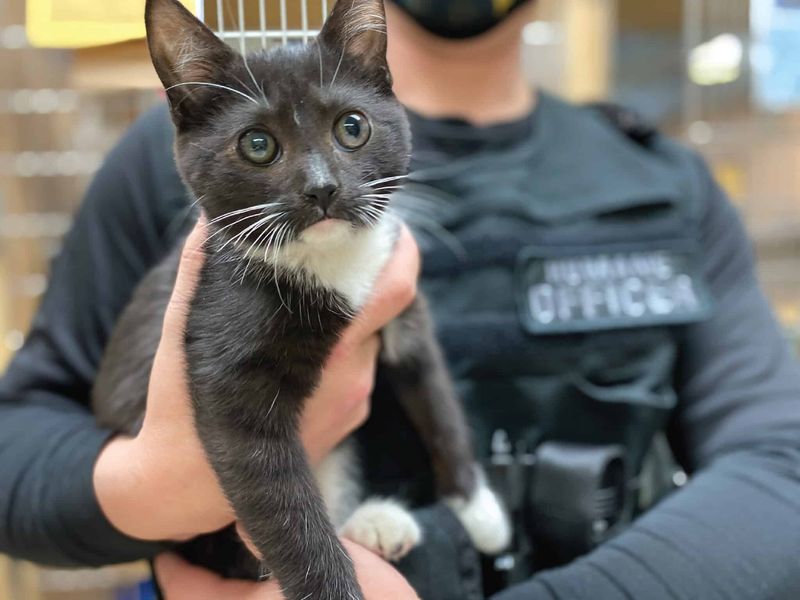
Reporting animal abuse is crucial to protect stray cats from harm. If you witness or suspect abuse, contact local authorities or animal welfare organizations immediately. Providing details and evidence can assist in investigations and ensure the cats’ safety. Awareness and vigilance in the community are key to preventing abuse. By taking action, you help create a safer environment for stray cats, reinforcing the message that they deserve respect and protection. Your proactive stance can deter future incidents, promoting a compassionate community.
Collaborate with Veterinarians
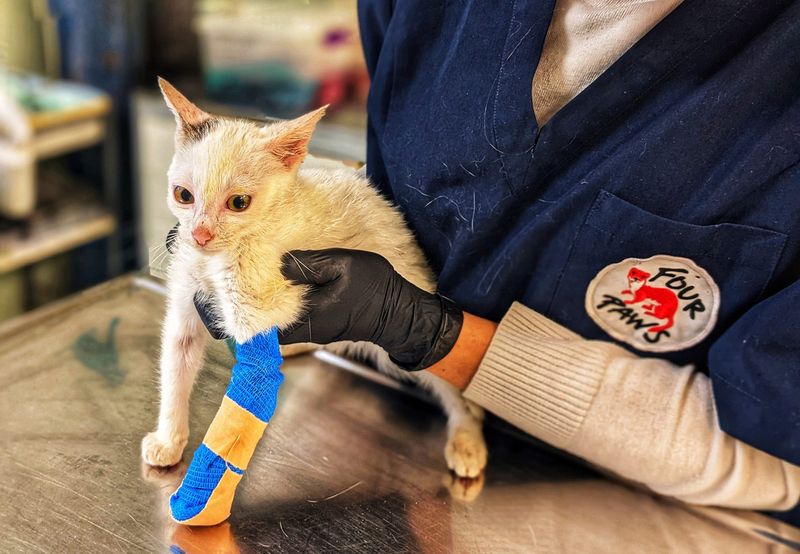
Working with veterinarians can provide essential support for stray cats. They offer professional advice on health issues, vaccinations, and spay and neuter options. Establish partnerships with local vets to access services at reduced costs. Collaboration can also involve organizing health clinics for stray cats. By engaging with veterinarians, you ensure that cats receive the necessary care, improving their health and longevity. This partnership highlights the importance of professional involvement in stray cat welfare, enhancing community efforts to support these animals.
Provide Flea Treatments

Flea infestations can severely impact a stray cat’s health. Providing flea treatments helps alleviate discomfort and prevents disease transmission. Consult with a veterinarian to choose safe and effective products. Regular treatments can significantly improve a stray cat’s quality of life, reducing itching and irritation. Consider setting up a schedule for administering these treatments, coordinating with other caregivers if possible. By actively managing flea issues, you contribute to a healthier environment for stray cats, ensuring they remain comfortable and disease-free.
Advocate for Stray Cat Policies

Advocating for policies that protect stray cats can lead to significant changes. Work with local government and organizations to create and support legislation focused on humane treatment and population control. Participate in community meetings, write letters, and gather signatures for petitions. Your voice can influence decisions that directly impact stray cats’ lives, ensuring they receive the protection and resources they need. By engaging in policy advocacy, you champion the rights of stray cats, contributing to a more compassionate and proactive community approach towards their welfare.

